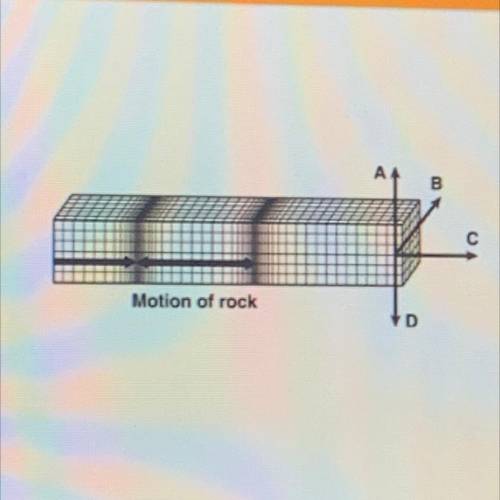
Physics, 07.05.2021 20:40 hejdiidid9311
During earthquakes, two types of waves can be created. One is a
longitudinal wave form called the P-wave. In the diagram, the compressions of a seismic P-wave through rock are shown. Which arrow shows the direction in which the P-wave will move?
Select one:
- B.
- D.
- C.
- A.


Answers: 1


Other questions on the subject: Physics

Physics, 21.06.2019 23:10, itzlianne
A248-g piece of copper is dropped into 390 ml of water at 22.6 °c. the final temperature of the water was measured as 39.9 °c. calculate the initial temperature of the piece of copper. assume that all heat transfer occurs between the copper and the water. remember, the density of water is 1.0 g/m
Answers: 1

Physics, 22.06.2019 15:50, janeou17xn
Decreased sensitivity to an unchanging stimulus is known as
Answers: 3

Physics, 22.06.2019 16:30, jetblackcap
When conducting an investigation to determine which type of fertilizer produces the most flowers on a plant, which variable would be graphed on the x-axis once you collected the data? a. type of fertilizer b. amount of flowers c. amount of water d. number of days that the plants grew
Answers: 1

Physics, 22.06.2019 21:00, sportsseolive4471
Acentrifuge in a medical laboratory rotates at an angular speed of 3,700 rev/min. when switched off, it rotates through 54.0 revolutions before coming to rest. find the constant angular acceleration (in rad/s2) of the centrifuge. your response is within 10% of the correct value. this may be due to roundoff error, or you could have a mistake in your calculation. carry out all intermediate results to at least four-digit accuracy to minimize roundoff error. rad/s2
Answers: 1
You know the right answer?
During earthquakes, two types of waves can be created. One is a
longitudinal wave form called the...
Questions in other subjects:

Mathematics, 02.10.2019 17:50


Mathematics, 02.10.2019 17:50

Mathematics, 02.10.2019 17:50


Biology, 02.10.2019 17:50


Mathematics, 02.10.2019 17:50


Mathematics, 02.10.2019 17:50



